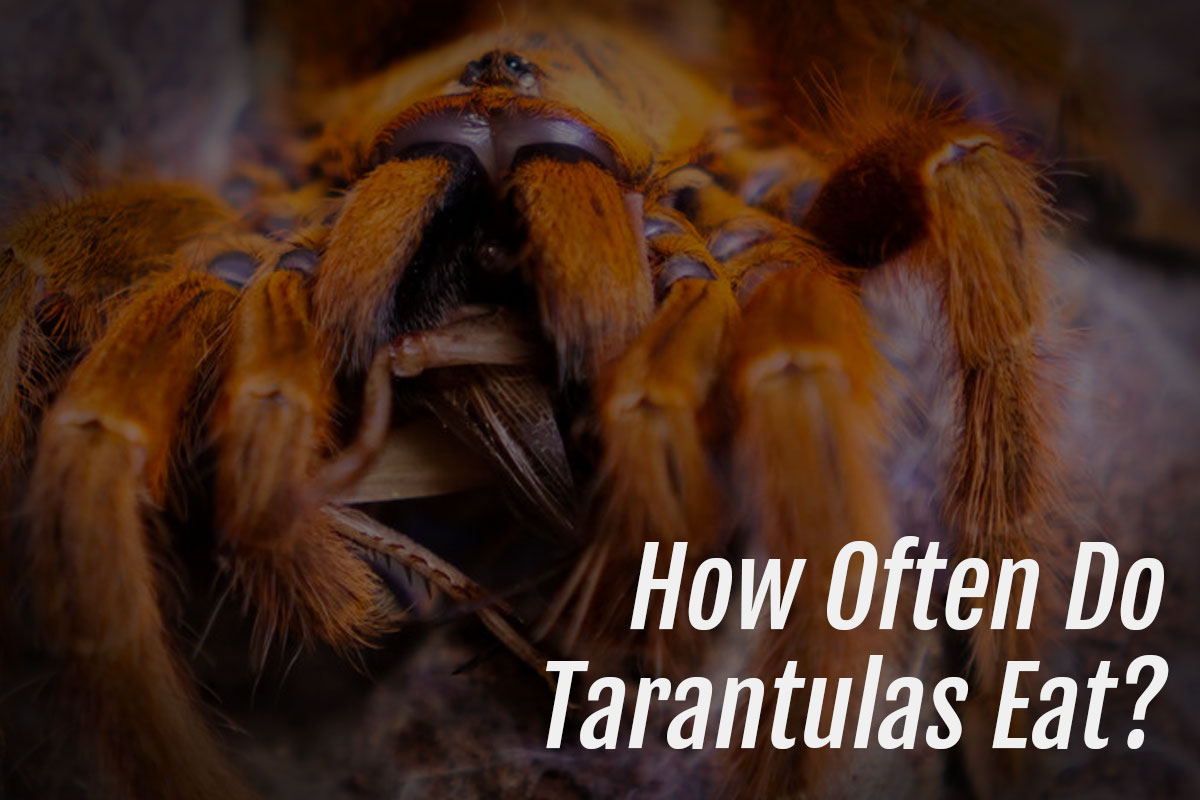The Hungry Tarantula: How Often Should Your Eight-Legged Friend Eat?
Tarantulas are captivating creatures that draw the interest of numerous individuals fascinated with the world of exotic pets. These arachnids have a reputation for being fearsome, but they can also be fascinating pets if cared for properly. One crucial aspect of tarantula care is understanding how often they eat. In this blog post, we will explore the feeding habits of tarantulas, including factors that influence feeding frequency, typical feeding frequency, and what happens if tarantulas don’t eat enough.
Factors that Influence Tarantula Feeding Frequency
Several factors influence how often tarantulas eat, including species differences, age and size of tarantulas, temperature and humidity, availability of prey, and seasonal variations.
Species Differences
Different species of tarantulas have different feeding requirements. Some tarantulas are voracious eaters and require frequent feedings, while others may only need to eat once a week or even less frequently. For example, the Mexican Redknee tarantula (Brachypelma smithi) is a species that is known to have a slow metabolism, so it doesn’t require as much food as other species. On the other hand, the Brazilian salmon pink tarantula (Lasiodora parahybana) is a species that requires frequent feedings because of its fast metabolism.
Age and Size of Tarantulas
The age and size of tarantulas also play a role in their feeding frequency. Younger tarantulas require more frequent feedings than mature tarantulas. Smaller tarantulas eat less than larger tarantulas. This is because the smaller tarantulas have a smaller metabolism and need less food to maintain their bodies.
Temperature and Humidity
Temperature and humidity also play a role in tarantula feeding frequency. Tarantulas require a warm environment to help them digest their food properly. They also need a certain level of humidity to maintain their health. If the temperature or humidity levels are too low, tarantulas may not eat as often as they should.
Availability of Prey
The availability of prey is another factor that can influence tarantula feeding frequency. If the prey is not available, tarantulas will naturally eat less. It is crucial to provide tarantulas with a steady supply of food to maintain their health.
Seasonal Variations
Tarantula feeding frequency may also vary depending on the season. During the winter months, tarantulas may not eat as often because of the colder temperatures. Some species may even go into a state of torpor during this time, where they become less active and require less food.
Typical Feeding Frequency for Tarantulas
The typical feeding frequency for tarantulas depends on several factors, including species, age and size, temperature and humidity, availability of prey, and seasonal variations. In general, most tarantulas should be fed once a week. However, some species may require more frequent feedings, while others may only need to be fed every other week.
One way to determine if a tarantula is hungry is to look for signs of activity. If the tarantula is active and moving around its enclosure, it may be hungry. However, if the tarantula is inactive and spends most of its time hiding, it may not be hungry.
Another way to determine if a tarantula is hungry is to observe its behavior during feeding time. If the tarantula eagerly attacks its prey, it is likely hungry. If the tarantula shows little interest in the food, it may not be hungry.
What Happens if Tarantulas Don’t Eat Enough
Underfeeding can also lead to stunted growth and a shortened lifespan. Tarantulas that do not receive enough nutrients may not be able to grow and develop properly, leading to a smaller size than what is typical for their species. Additionally, underfed tarantulas may not live as long as they would if they were properly fed, as a lack of nutrients can cause stress and other health problems.
In some cases, tarantulas may stop eating altogether, a phenomenon known as fasting. In most cases, this is due to the tarantula being in what’s called premolt.
If you suspect your tarantula is not eating enough, there are a few things you can do. First, make sure you are providing the appropriate temperature and humidity levels for your tarantula species. These conditions can significantly impact a tarantula’s appetite. Additionally, make sure you are providing a steady supply of prey that is appropriate for your tarantula’s size and species.
Conclusion
In conclusion, understanding how often tarantulas eat is a crucial aspect of tarantula care. Feeding frequency can vary depending on several factors, including species, age and size, temperature and humidity, availability of prey, and seasonal variations. Most tarantulas should be fed once a week, but some species may require more or less frequent feedings. Underfeeding can have serious health consequences, including weakened immune systems, stunted growth, and a shortened lifespan. If you suspect your tarantula is not eating enough, take steps to provide appropriate conditions and prey. With proper care and feeding, tarantulas can be fascinating pets for years to come.
Other Helpful Info!
If you found this post helpful, please consider sharing it. It really helps the site in the search algorithm! Thanks!
Do you have inverts and arachnids? Want a fun way of tracking them? Then download Arachnifiles for Android or iOS today! It’s free!
Want to read more helpful blog posts? Click here to view other blog posts!
Want to read more about invertebrate care? Click here to view other care guides!




